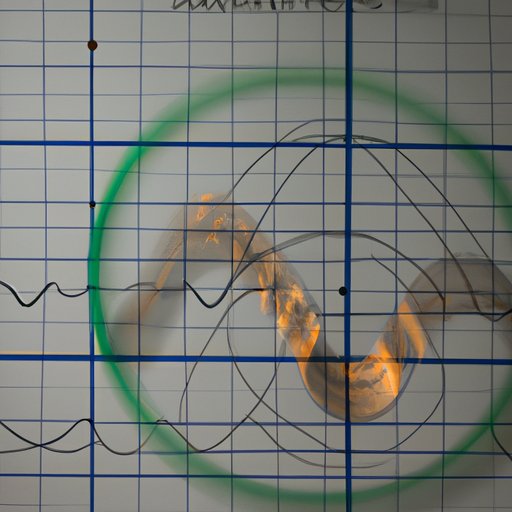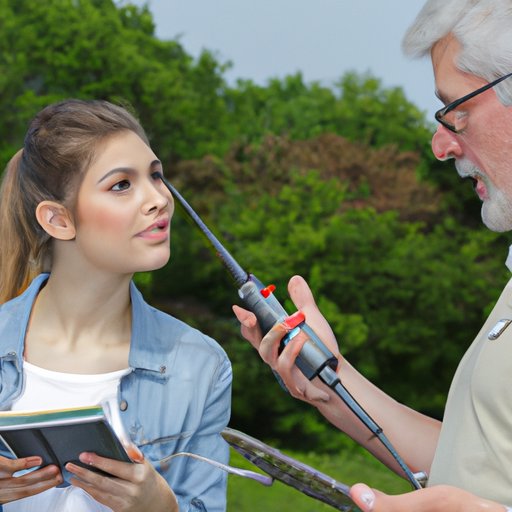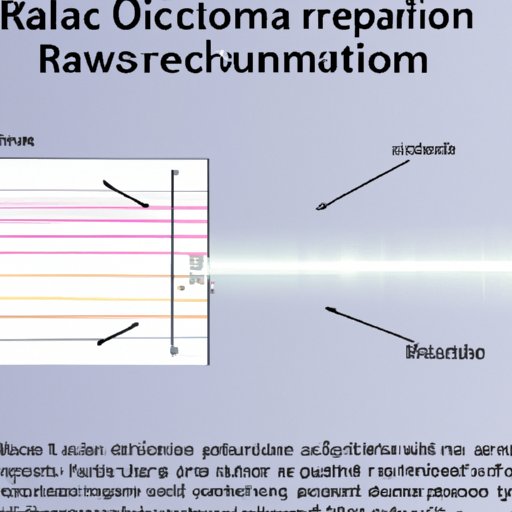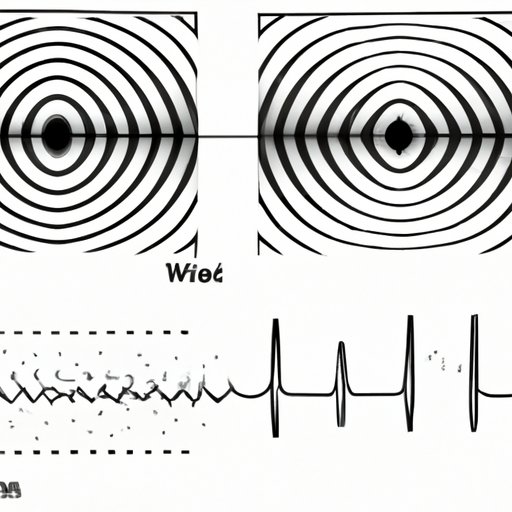Introduction
Radio waves are a type of electromagnetic radiation that is used for communication purposes. They are part of the same spectrum of radiation as visible light, microwaves, and X-rays. Understanding how radio waves propagate is important for many applications, including radio broadcasting, wireless communication, and satellite navigation.

Exploring the Physics of Radio Waves
In order to understand how radio waves travel, it is necessary to comprehend wave theory and its application to radio waves. According to physicist James Clerk Maxwell, all forms of electromagnetic radiation, including radio waves, are composed of oscillating electric and magnetic fields. These fields move in a wave-like manner and interact with each other in a predictable way. The properties of radio waves, such as their frequency, amplitude, and phase, help determine how they propagate through space.
The physical properties of radio waves also play an important role in understanding how they travel. Radio waves have varying frequencies, which are measured in hertz (Hz). Low frequency radio waves have longer wavelengths and can travel farther than high frequency radio waves. In addition, radio waves can be either polarized or unpolarized. Polarization occurs when the electric and magnetic fields of the radio wave are aligned in a particular direction.
How Do Radio Waves Propagate?
Radio waves propagate at the speed of light, which is approximately 300 million meters per second. This means that a radio signal can travel around the world in about one-tenth of a second. However, atmospheric conditions can affect the speed of radio wave propagation. For example, ionospheric disturbances caused by solar activity can cause radio signals to slow down, resulting in delays and interference.
In addition, the frequency of the radio wave has an effect on its propagation. Higher frequency radio waves are more easily absorbed by the atmosphere than lower frequency waves, meaning that low frequency waves can travel farther than high frequency waves. This phenomenon is known as the “skip zone” effect.
Investigating Radio Wave Frequency
The frequency of a radio wave is related to its wavelength. The higher the frequency of the wave, the shorter its wavelength. This relationship is expressed by the equation: ƒ = c/λ, where ƒ is the frequency, c is the speed of light, and λ is the wavelength. The frequency of a radio wave also affects its power and distance of transmission. Lower frequency waves have more power and can travel farther than higher frequency waves.
In addition, the frequency of the radio wave can affect its ability to penetrate obstacles. Low frequency waves tend to be more easily blocked by obstacles than high frequency waves. This means that higher frequency waves can be used for transmission over long distances, as they are less likely to be blocked by obstructions.

Examining the Nature of Radio Transmission
Radio waves are transmitted using antennas. Antennas convert the electrical signal into a radio wave, which is then broadcast through the air. The signal from the antenna is affected by the environment in which it is located, such as nearby buildings or trees. The signal can also be affected by the orientation of the antenna. For example, an antenna that is pointing towards the ground will not transmit as far as one that is pointing upwards.
Another important concept in radio transmission is line-of-sight transmission. This refers to the fact that radio waves cannot bend around obstacles. If there is an obstruction between the transmitter and receiver, the signal will be blocked or weakened. This is why it is important to position antennas in locations that provide clear line-of-sight transmission.

Understanding Radio Wave Reflection and Refraction
Radio waves can be affected by reflection and refraction. Reflection occurs when a radio wave strikes an object and is bounced back in the direction from which it came. This can be used to amplify the signal, allowing it to travel farther. Refraction occurs when a radio wave passes through a medium, such as air or water, and changes direction due to the change in density of the medium.
Obstructions can also affect radio wave propagation. Objects that are larger than the wavelength of the radio wave can block or weaken the signal. This is because the radio wave is reflected off the surface of the object, reducing the strength of the signal. Smaller objects, such as trees, can also reduce the strength of the signal by scattering the radio wave in multiple directions.
The Role of Radio Wave Polarization in Propagation
Polarization plays an important role in radio wave propagation. Radio waves can be either horizontally or vertically polarized. Horizontally polarized radio waves are more easily blocked by objects than vertically polarized waves. This means that horizontally polarized radio waves are more suitable for short-distance transmission, while vertically polarized waves are better suited for long-distance transmission.
Polarization also affects the strength of the signal. A horizontally polarized radio wave will have a stronger signal than a vertically polarized wave, meaning that it can travel farther. In addition, the polarization of the radio wave can affect its ability to penetrate obstacles. Polarized radio waves are more likely to be blocked by objects than unpolarized waves.
Conclusion
In conclusion, understanding the physics of radio wave propagation is essential for many applications. Radio waves have varying properties, such as frequency, amplitude, and polarization, which affect how they travel through space. Radio waves propagate at the speed of light, but can be slowed down or blocked by atmospheric conditions or obstructions. The frequency of the radio wave determines its power and distance of transmission, while its polarization affects its ability to penetrate obstacles. By understanding these principles, engineers and scientists can design effective systems for transmitting and receiving radio signals.
(Note: Is this article not meeting your expectations? Do you have knowledge or insights to share? Unlock new opportunities and expand your reach by joining our authors team. Click Registration to join us and share your expertise with our readers.)
